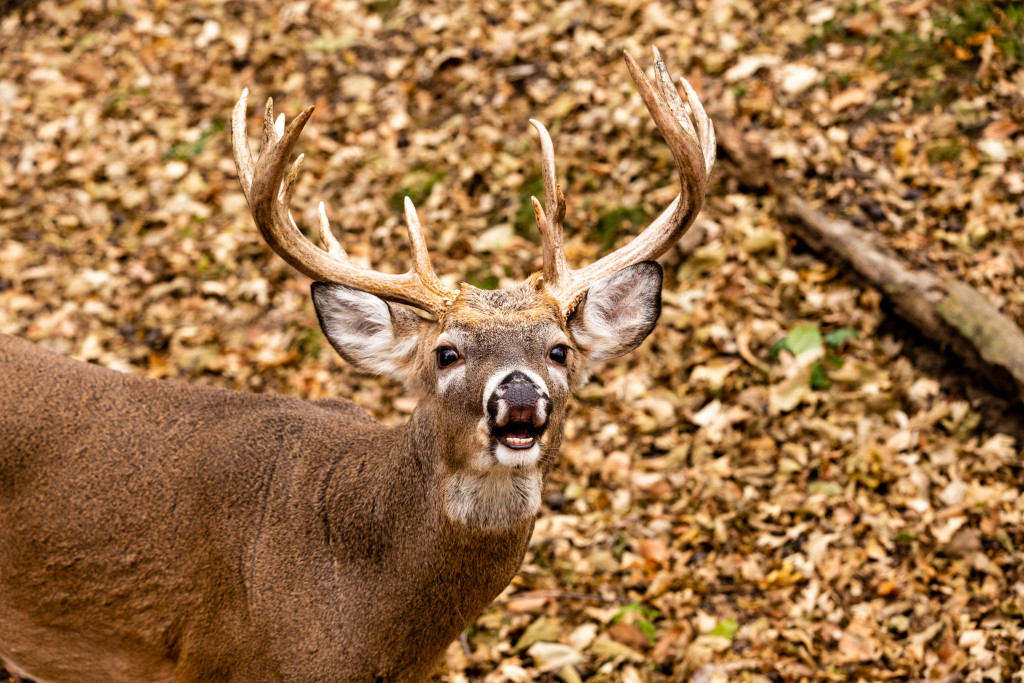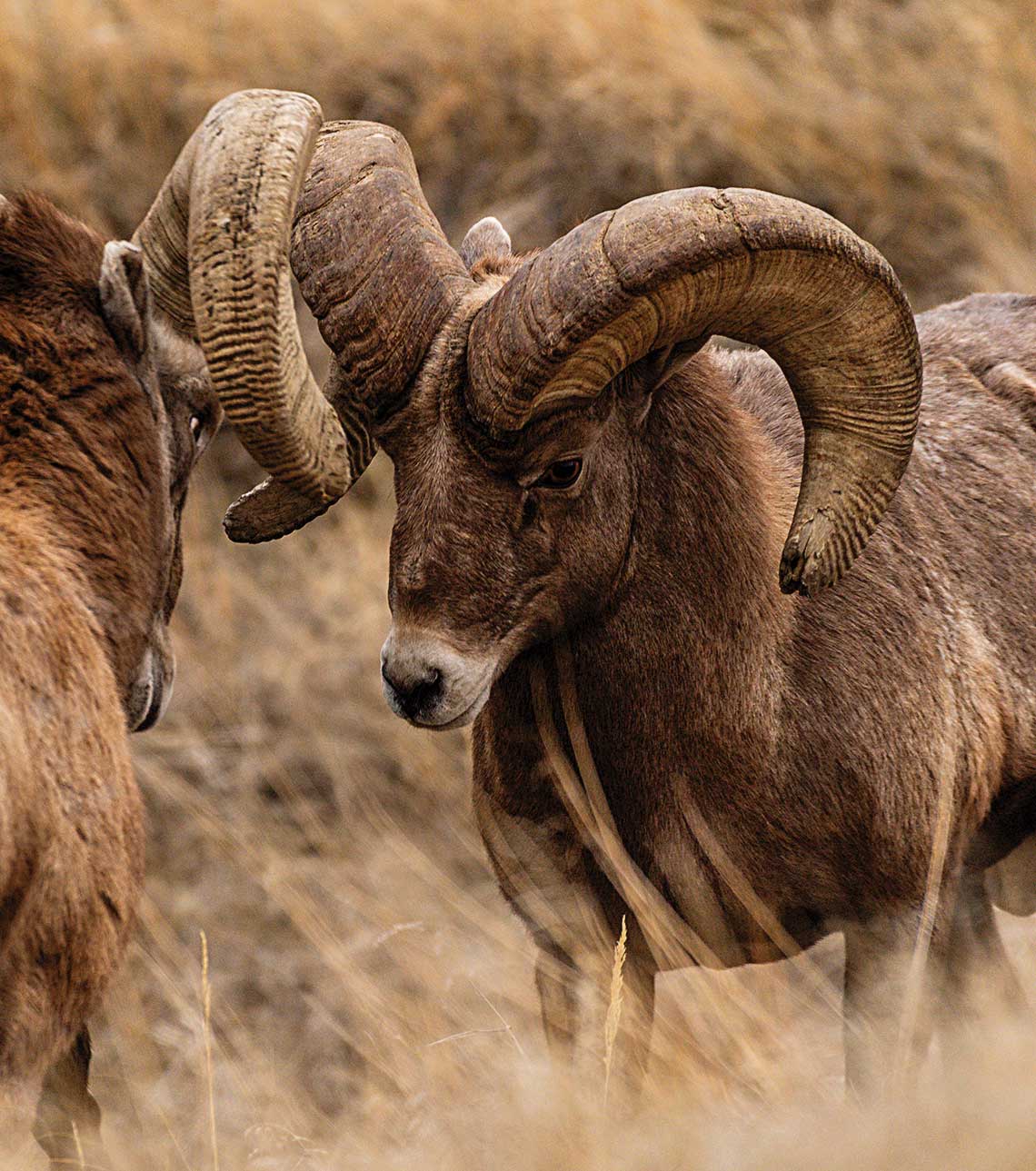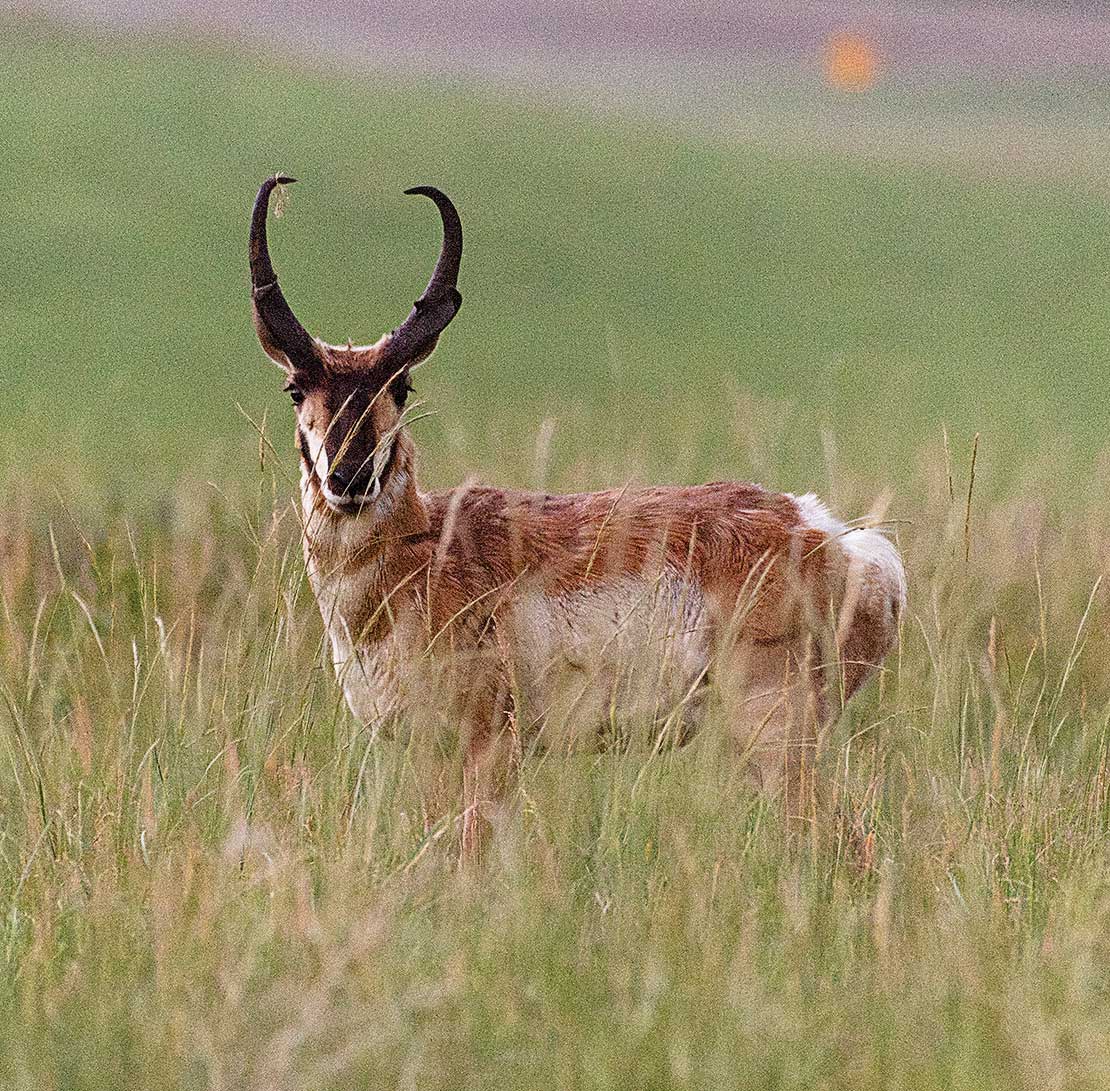
By Monica Macoubrie, Wildlife Education Specialist
How many times have you heard someone say, “Wow, look at the horns on that deer”? Horns and antlers are not interchangeable. While they share some similarities, horns and antlers are distinct forms of animal headgear.
Antlers
Males in the Cervidae family, including mule deer, white-tailed deer, moose and elk, are the only class of mammals to grow antlers. Exceptions: Both males and females of caribou and reindeer possess antlers, and, oddly, males drop their antlers before females. For instance, caribou males in Alaska drop their antlers in October, whereas pregnant females may retain their antlers well into May or June the following year. Scientists believe this is to help females fight and defend their food sources through the winter.
Antlers can grow exceptionally large, and their morphology will vary among species.
How Do Antlers Grow?
Antlers begin growing from two small bony structures on top of an animal’s head called pedicles. For deer or elk in Nebraska, changes in testicular and pituitary hormones during the spring signals the growth of antlers.
In the early stages of development, antlers have high water and protein content. They are made of bone and are coated in velvet — a thin, fuzzy layer of skin tissue that carries blood and nutrients to the antlers during development. When the antlers reach their full size, the velvet will dry and stop growing. The animal will then shed this layer by scraping its antlers on trees and thick brush. This scraping action will also stain, shine and sharpen the rack. The result will, hopefully, be impressive enough to compete for and attract a mate.
As the antlers stop growing, the outer, spongy bone is replaced by compact bone while the centers become filled with coarse, spongy lamellar bone and marrow spaces. In winter when growth hormones decrease, the pedicle loses calcium, which will weaken the connection between the pedicle and the antler. At this point, the antler(s) will fall off. For a short time, males will be without antlers until the growing process begins again in the spring.
Purpose of Antlers
Among cervids, the phrase “bigger is better” couldn’t be truer. Hunters know that males use their antlers during the breeding season to compete for females and to fight other males for hierarchy and leadership; females see males with larger antlers to be fitter because of their position as alpha males. Additionally, antlers also are indicators of good metabolic efficiency and food gathering, which are desirable traits in a reproductive partner.
Antlers aren’t just used for acquiring a mate — they also are used for protection against predators. Animals such as coyotes, bobcats and mountain lions could be potential predators for cervids.

Horns
Horns grow on completely different groups of animals: males, and females in some species, of bovids. The Bovidae family includes cows, sheep, goats, water buffalo, antelopes and gazelles. Unlike antlers that have the same basic shape, the appearance of horns varies widely from one animal to the next.
How Do Horns Grow?
Unlike antlers that branch out and shed, horns, also called ossicones, do neither of these. In many species, horns never stop growing throughout the life of the animal, which is useful as horns can become worn down over time. Normally, the only reason an animal loses its horns is if they are broken or cut off, and if this happens, horns cannot re-grow.
The growth of horns is completely different than that of antlers. The cores begin as small, bony growths underneath the skin and over the skull in the subcutaneous connective tissue. Horns are not attached to the skull — they possess their own centers of ossification and fuse secondarily to the skull bones.
In the Bovidae family, horns can grow singularly or as symmetrical pairs, such as those seen on bighorn sheep.
Purpose of Horns
Although the process of growth is different for horns and antlers, they are similar in function and use. Horns are often used by males to fight and display during the breeding season. These fights include clashes that will ultimately determine the overall strength of the animal and its right to breed.
Unlike antlered species, the females of many species of bovids possess horns, especially among larger species. This is most likely due to the tendency of larger species to fight more often; smaller bovids typically prefer to run away and hide.
Horns on males are usually thicker at the base and able to withstand more force. On females, they are normally straighter and thinner, which may make the horns better for stabbing for defense.
In addition to fighting for dominance, territory or a mate, horns can be used for other functional purposes, such as digging in soil or stripping bark from trees. There is evidence of horns being used as cooling systems: Blood vessels in the bony core of the horn can let off heat to lower the animal’s body temperature.

Pronghorns, the Exception
In the Sandhills and western Nebraska, you may find an animal known as the pronghorn. This animal is the only surviving species of the North American ungulate family: Antilocapridae. Not only are pronghorn a unique ruminant, they also carry unique headgear, which have characteristics of both horns and antlers.
True antlers are made of bone and are shed each year, and true horns are made of compressed keratin that grows from a bony core and are never shed. Interestingly, the horns on a pronghorn are neither true horns nor true antlers. Instead, the sheath is made of keratin, yet the horns are shed yearly.
True horns normally have only one point, but pronghorn have branched horns. Females also have horns, but they are much smaller than their male counterparts. Pronghorns are the only animals in the world that have forked horns that are shed each year.
